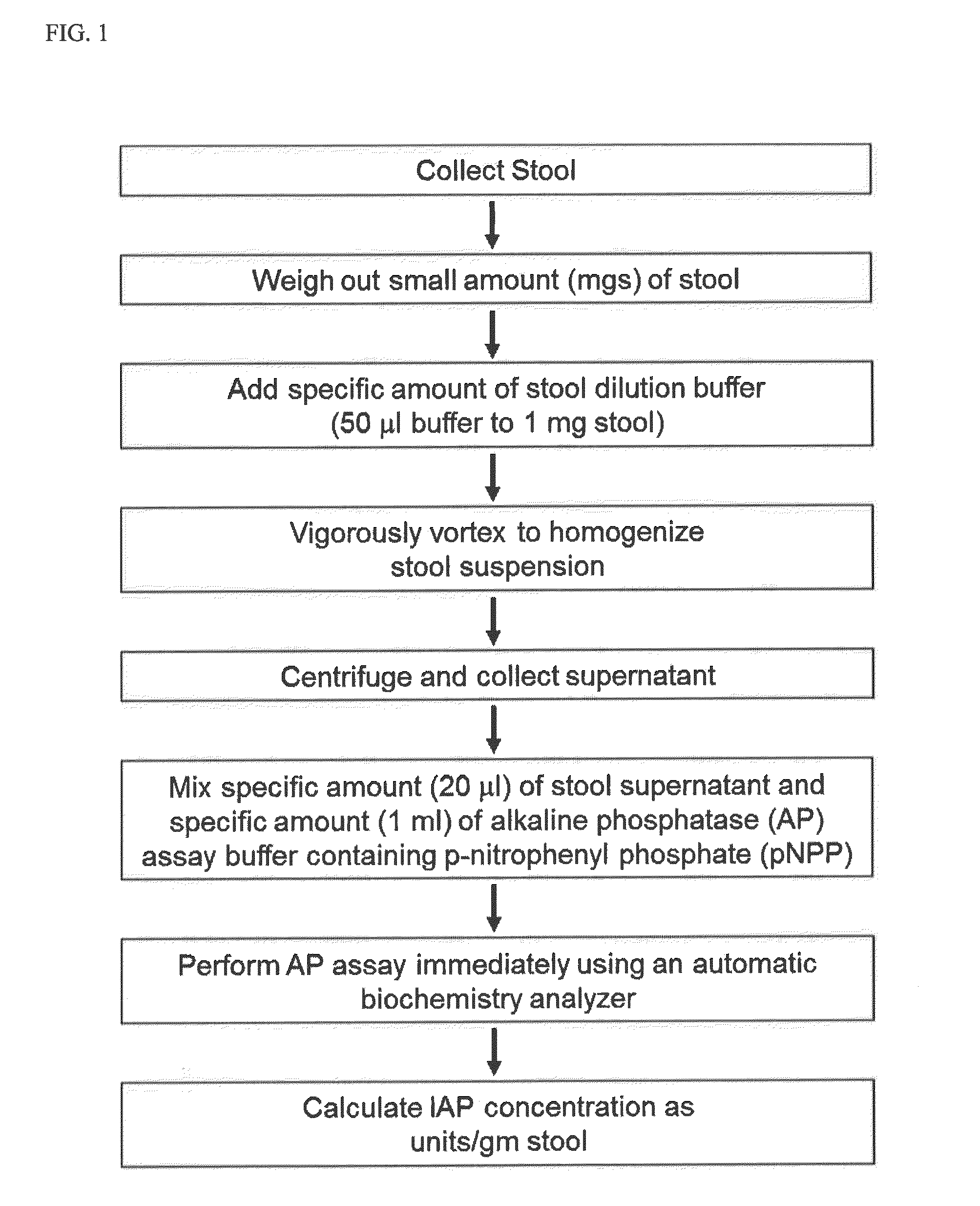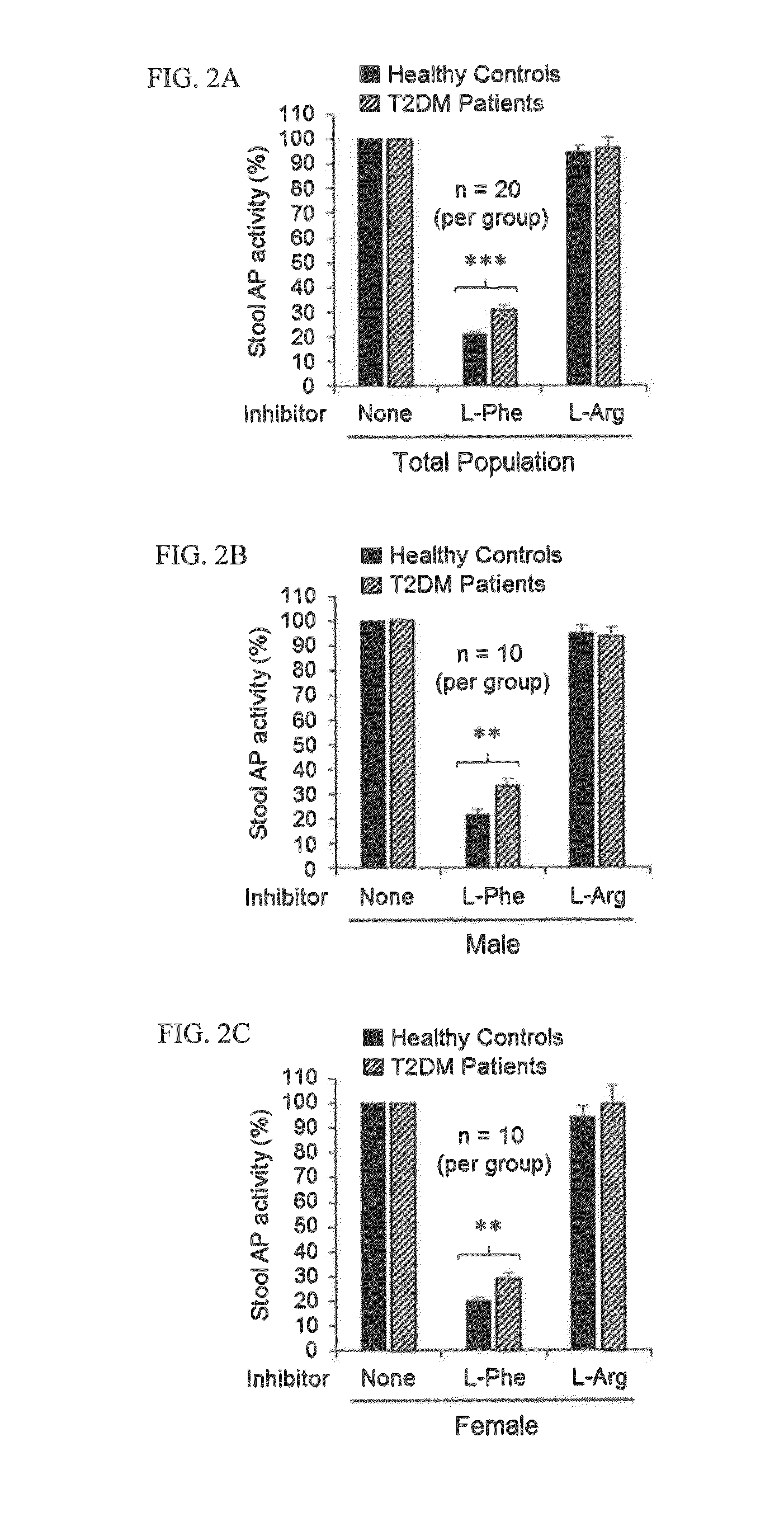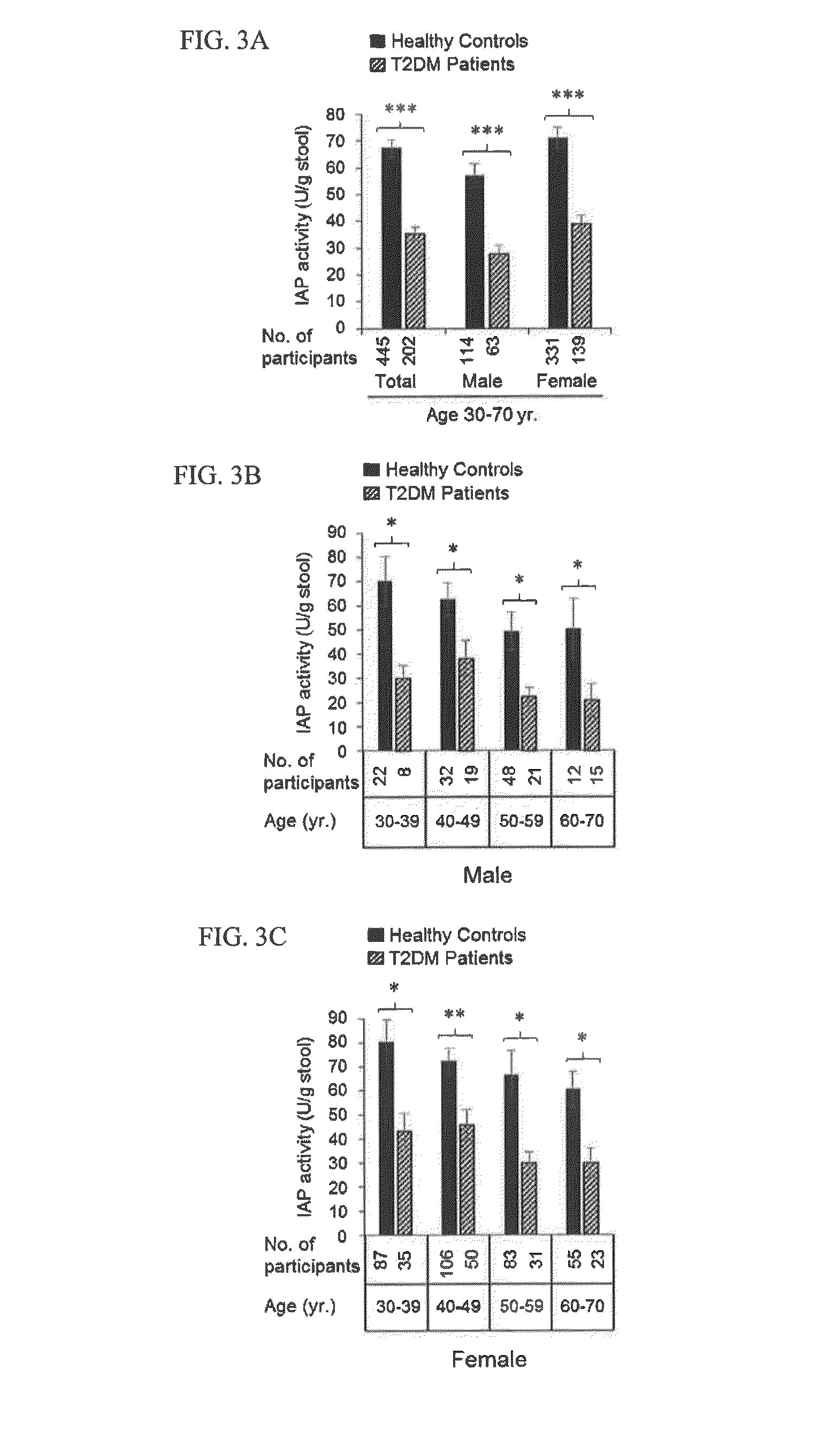Diagnosis and treatment of incipient diabetes
a diabetes and incipient technology, applied in the direction of instruments, peptide/protein ingredients, metabolic disorders, etc., can solve the problem that the measurement of fpg cannot be used to predict far (years) and achieve the effect of reducing the risk
- Summary
- Abstract
- Description
- Claims
- Application Information
AI Technical Summary
Benefits of technology
Problems solved by technology
Method used
Image
Examples
example 1
The Flow Chart Showing the Steps for Determining the Concentrations of Intestinal Alkaline Phosphatase (IAP) in Stool
[0084]Mice deficient in intestinal alkaline phosphate (IAP-knockout) have been shown to develop type 2 diabetes mellitus (T2DM). Based on this observation we hypothesized that the T2DM patients might have less amount of IAP in their stools. Therefore, we planned to measure the IAP concentration in the stools of T2DM patients and control healthy participants. A schematic presentation of the protocol to determine IAP in stool is provided in FIG. 1.
example 2
Stool Alkaline Phosphatase Activity is Mostly Due to Intestinal Alkaline Phosphatase
[0085]IAP knockout (Akp3− / −) mice develop T2DM, and based on this observation we hypothesized that humans with T2DM might have IAP deficiency. Accordingly, we decided to measure IAP concentrations in the stools of diabetic and control non-diabetic healthy people. However, taking in consideration of possible association of different isoforms of alkaline phosphatases (APs) with T2DM in humans, we first decided to determine the nature of major AP isoform in the stools of both diabetic and control healthy populations. Stool samples of non-diabetic healthy controls and T2DM patients were homogenized in a stool dilution buffer followed by centrifuging and collection of supernatant. We performed AP assays on individual aliquots of a stool sample supernatant in presence of L-phenylalanine (L-Phe, a specific inhibitor of IAP) as well as L-homoarginine (L-Arg, a specific inhibitor of TNAP).
[0086]FIG. 2 is a gr...
example 3
The Levels of Intestinal Alkaline Phosphatase (IAP) is Less in the Stools of Diabetic Patients Compared to Healthy Controls
[0088]Table 1 shows a few important characteristics along with the concentrations of IAP in diabetic and healthy populations. The study included 202 diabetic patients (T2DM) and 445 control healthy subjects. The diabetic group included 63 men and 139 women, whereas the control group comprised of 114 men and 331 women. The ages of the participants ranged from 30 to 70 years. A comparative analysis of IAP values of diabetic and healthy participants is provided. It is evident that compared to the total healthy population the total diabetic population has 47.6% less IAP in their stools (Mean+ / −SEM: 67.4± / −3.2 vs 35.3+ / −2.5 units / g stool, respectively; p=5.6E-10). Compared to healthy males, diabetic males have 51.6% less IAP (57.1+ / −4.5 vs 27.7+ / −3.2 units / g stool, respectively; p=1.1E-05). Similarly, in comparison to healthy females, diabetic females have 45.3% less...
PUM
| Property | Measurement | Unit |
|---|---|---|
| Fraction | aaaaa | aaaaa |
| Fraction | aaaaa | aaaaa |
| Time | aaaaa | aaaaa |
Abstract
Description
Claims
Application Information
 Login to View More
Login to View More - R&D
- Intellectual Property
- Life Sciences
- Materials
- Tech Scout
- Unparalleled Data Quality
- Higher Quality Content
- 60% Fewer Hallucinations
Browse by: Latest US Patents, China's latest patents, Technical Efficacy Thesaurus, Application Domain, Technology Topic, Popular Technical Reports.
© 2025 PatSnap. All rights reserved.Legal|Privacy policy|Modern Slavery Act Transparency Statement|Sitemap|About US| Contact US: help@patsnap.com



